Engine Room Fire on Containership Injures Four at Port of Wilmington
Firefighters were called to the Port of Wilmington on Wednesday morning after flames erupted in the engine room of a docked vessel. The emergency call came in at 9:28 a.m....
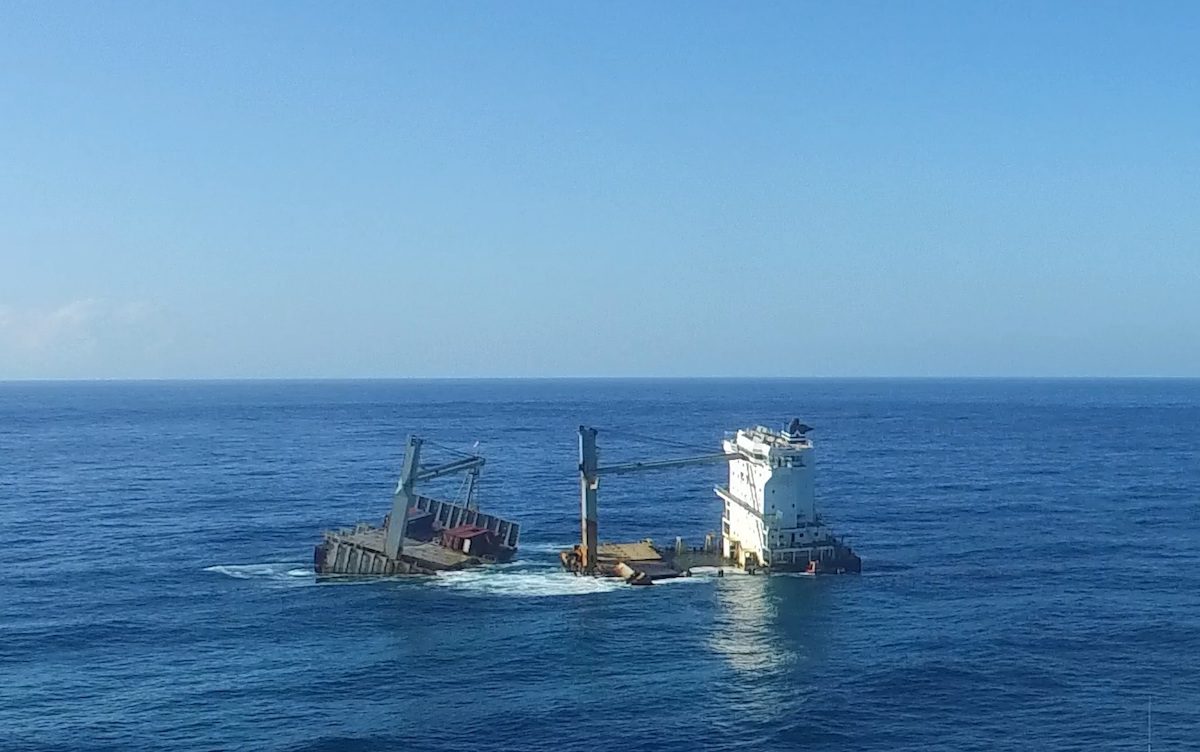
A Shanghai Salvage vessel (front) at the site of the Kea Trader wreck off New Caledonia circa July 12, 2018. Photo credit: Lomar Shipping
It’s been one year now since the 2,194 TEU capacity containership Kea Trader ran aground on a reef in the South Pacific, setting off one of the more complex container ship salvages since the 2011 grounding of the MV Rena in New Zealand.
The MV Kea Trader was only half a year old when she grounded on 12 July 2017, during a voyage from Papeete, in French Polynesia, to Nouméa while loaded with 782 containers and flat-racks. In the year since the grounding, the ship has experienced back-to-back cyclones and all-around bad weather that has prevented salvors from boarding the vessel more than half the time.
On today’s one-year anniversary, however, the shipowner Lomar Shipping is reporting progress in the salvage and recovery project.
According to Lomar, the salvage began with the removal of 1,009 cubic meters of heavy fuel oils (HFO), diesel and other lube oils, and more recently oily polluted water, along with 697 of the original load of 782 containers and flat-racks on board.
More recently, 400 tonnes of other materials including furniture, computer equipment, partitions, false ceilings, mooring lines and other potential flotsam have been removed. Much of this material was airlifted from the vessel by helicopter due to the “year-round challenge” of swells impacting the location approximately 140 nautical miles off the port of Noumea, New Caledonia – the nearest point to land. Flights to and from the coast of Australia, for comparison, take around three hours.
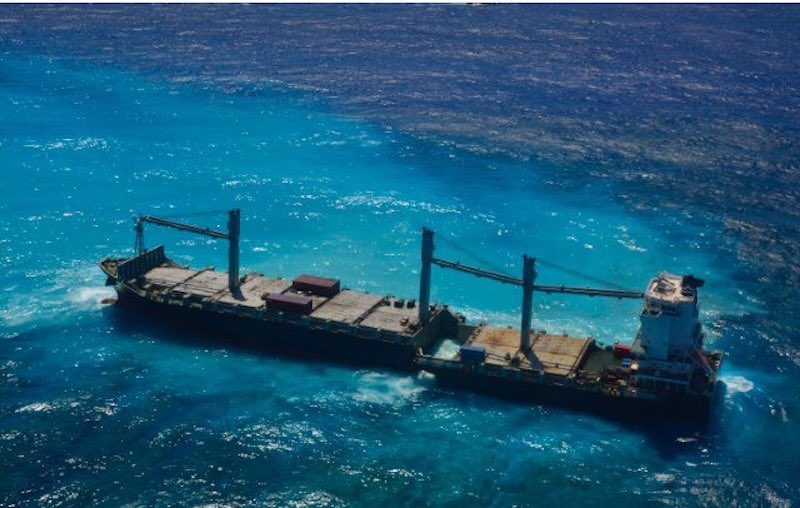
In the first six months since the grounding, the wreck experienced near-constant storm force conditions which slowed onsite work and caused the vessel to break in two halves last November.
Two cyclones in February and March, followed by persistent storms that lasted until the end of May, also affected the hull structure, moving the forward section on several occasions.
Today, safe access for workers from the appointed salvage company Shanghai Salvage is still only possible during favorable weather. Boarding has only been possible 40% of the time since November, according to Lomar Shipping.
The U.S. salvage firm Ardent previously had the contract for cargo removal and anti-pollution operations.
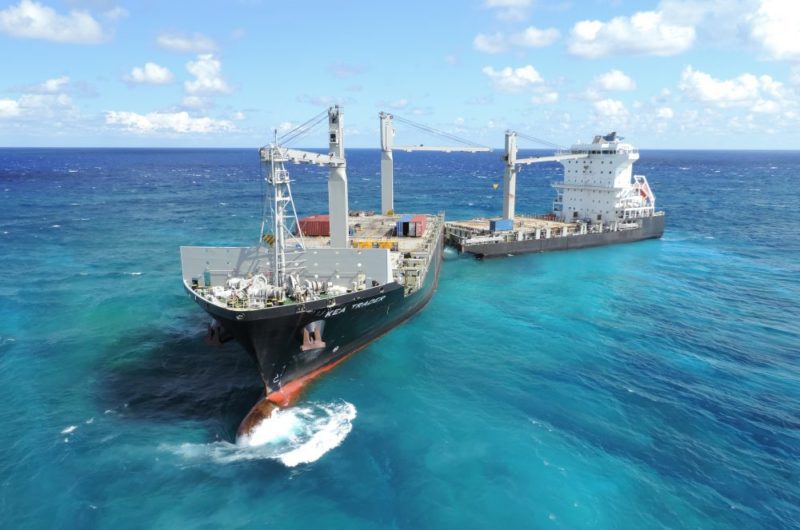
Due to lack of deck space remaining on board Kea Trader, helicopter landings have now become impossible and the remaining ship cranes are no longer in operation. Making things even more difficult, the forward section listing by 20 degrees and the aft 12 degrees.
Nevertheless, materials are still being removed when conditions permit with salvage workers concentrating on the collection of residual oily polluted water from pipes, reservoirs and hydraulic circuit, and any other remaining flotsam (399m3 of which has been removed to date).
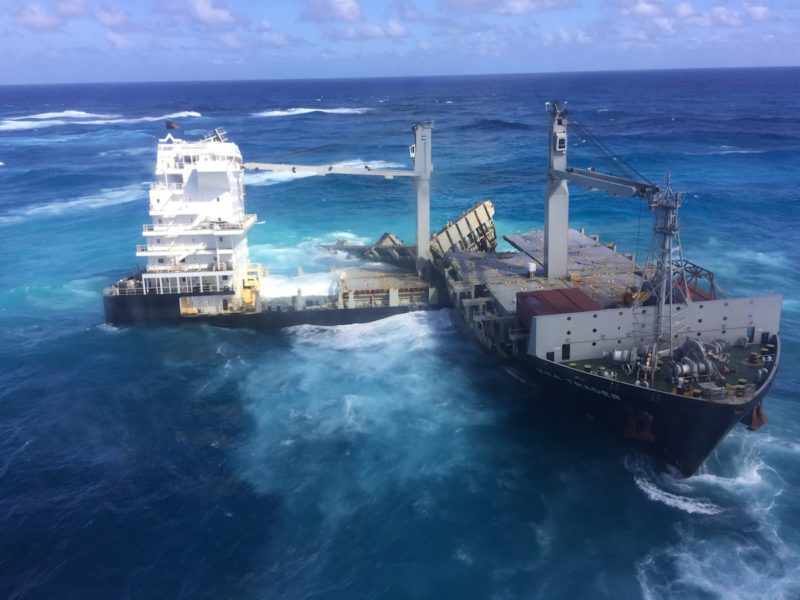
Five empty container shells, one damaged during heavy seas, remain on top of the forward section. Another eight of the original 782 containers and flat-racks remain below deck in the flooded cargo hold one but are believed to be damaged. Cargo hold 5, in the aft section of the vessel, was emptied at an early stage of the salvage operations.
Attention is now switching to the recovery of debris on the reef that detached during the storms. The shipowner says this follows completion of a new independent bathymetric survey to determine current surface conditions and the precise location of debris, enabling shallow work vessels to move around the rock hard reef for divers to collect the metal fragments.
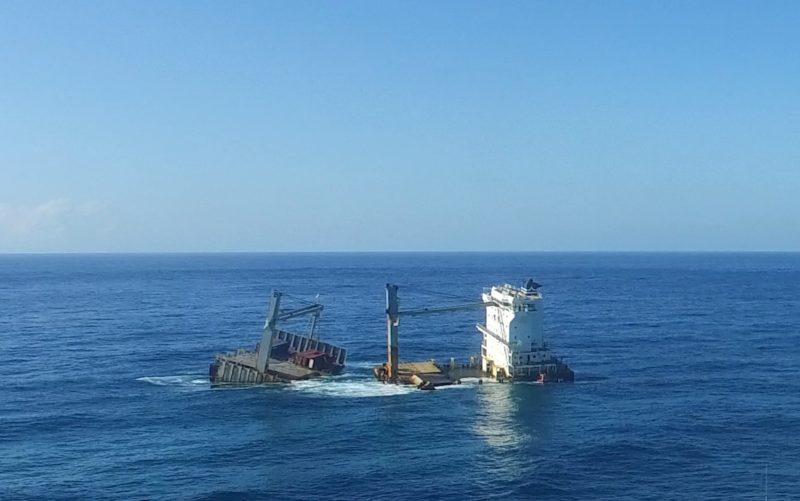
Airbags have been used to remove larger pieces of hull structure off the reef bed and onto the 19,000t Ju Li, a logistics support & command platform that is now coordinating Shanghai Salvage’s operations on site. This work will continue and escalate over the coming months with the return of more favorable weather.
The materials and debris currently being recovered will be recycled by local businesses in New Caledonia.
Plans for recovering more substantive pieces of hull from the reef bed are also advancing, with the intention to mobilize new heavy resources with heavy lift capabilities (the design of which is subject to complex engineering studies and final approval by the authorities). Lomar says it forms part of a revised methodology for removing the vessel, which has been required given its changing condition and is aimed to provide safeguards to the local environment.
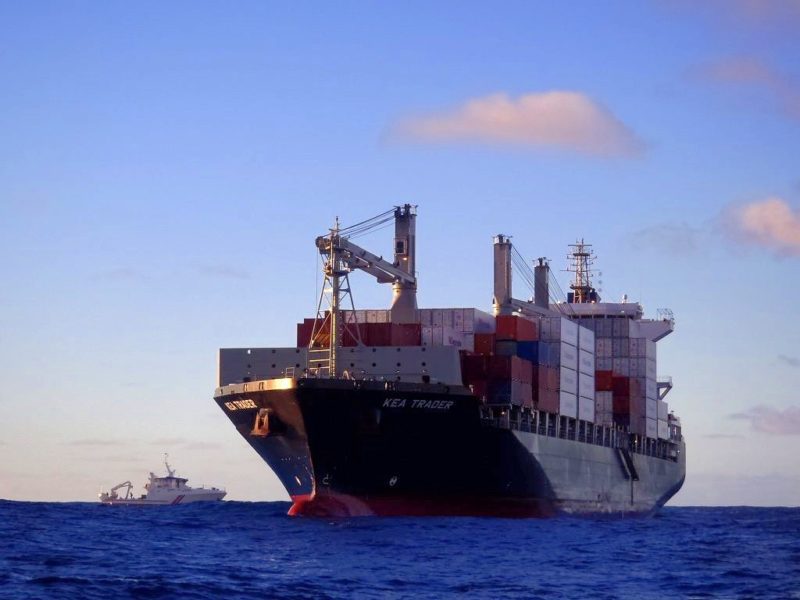
A Lomar spokesman says: “Tremendous progress has been made in the past 12 months to safely remove the Kea Trader – however these efforts have been stymied by horrendous conditions on site. It will continue to take time to complete but the safety of those involved and the protection of this marine environment must remain our priority. We are moving forward with every passing month and remain grateful for the continued support of the authorities and patience of people and businesses across New Caledonia.”
Four offshore vessels continue to work on site, while also monitoring the ocean for any floating debris and pollutants.
Lomar reports that the vessel’s fracture last November and subsequent storm damage did release a quantity of material that washed ashore in New Caledonia and the Loyalty Islands. In the 12 months to date, this has included less than one cubic metre (585kg) of tar balls and a further 18 tonnes of mostly polyurethane insulating material, plus pieces of containers and carpet – the volume of which has diminished in the last two months, says Lomar.
Although relatively small in the context of the quantity of material removed, 650 fully trained members of the local community, employed as contractors for Lomar Shipping, have collected any debris that has washed ashore – committing over 26,000 hours inspecting beaches in often remote and isolated areas across New Caledonia and the Loyalty Islands.

Sign up for gCaptain’s newsletter and never miss an update

Subscribe to gCaptain Daily and stay informed with the latest global maritime and offshore news
Essential news coupled with the finest maritime content sourced from across the globe.
Sign Up